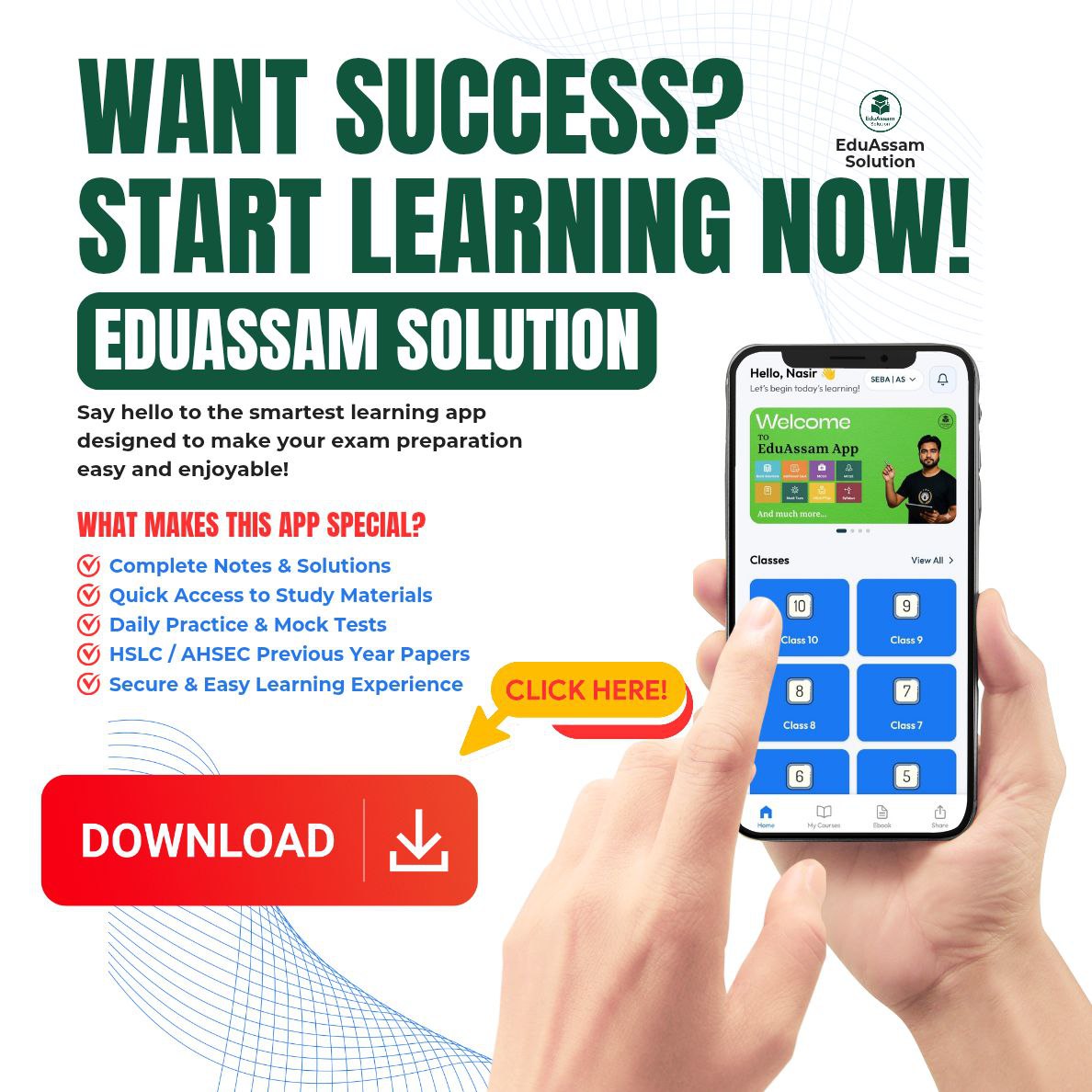SEBA Class 7 Social Science (English Medium) Chapter 24 – Democracy and Mass Media Solutions & Summary
SEBA Class 7 Social Science Chapter 24 – “Democracy and Mass Media” explains the significant role of mass media in a democratic society. It highlights how newspapers, television, radio, and the internet help citizens stay informed about government policies, social issues, and global events.
The chapter discusses the functions of mass media, including information dissemination, political awareness, opinion formation, and acting as a watchdog against corruption and injustice. It also covers the positive and negative effects of media, such as fake news, media bias, and the influence of advertisements.
Students will also learn about freedom of the press, government regulations on media, and the responsibilities of journalists in maintaining ethical journalism. The chapter further explores the impact of social media in modern democracy and how it has transformed communication and public engagement.
Our solutions provide NCERT-based textbook answers, multiple-choice questions (MCQs), and a detailed chapter summary to help students understand the relationship between democracy and mass media.
Class 7 Social Science (English Medium) PDF Solutions 2025-26 | SCERT Assam
Get comprehensive solutions, PDFs, and MCQs for SEBA Class 7 Social Science in English Medium. This resource covers Geography, History, and Economics, providing chapter-wise explanations and practice materials to help students excel in their exams.
Class 7 Social Science
Chapter – 24 Ospin Academy
Democracy and Mass Media
Exercise:
1. Write short answer:
(a) What is publicity?
Ans: Generally the process of circulation of information in the form of news, order, notice and advice from person to person and place to place is called publicity.
(b) What are the different means of publicity?
Ans: News, order, notice, advertisement, social media and word of mouth etc.
(c) Give examples of mass media.
Ans: Newspaper, magazine, T.V., radio, mobile etc.
(d) Name two types of ancient media?
Ans: In the past people used pigeon to send messages to even the most difficult areas. Kings used drummers to convey information.
(e) Who invented the printing press and when?
Ans: Zohan Gutenberg of Germany invented printing press in 16th century.
2. Write answers:
(a) What are the different types of media? How media help the people?
Ans: The means through which the information, news and views are spread among all sections of people is called media.
There are different types of media some of them are:
(i) Letter print media: Zohan Gutenberg of Germany invented printing press in 16th century. Thus we get printed magazine and paper etc. This type of media are called Letter Print Media. At present, there are as many as 62 thousand newspapers and magazines in India.
(ii) Mass Media: Some of the publicity media have wide range of coverage. Such a media can spread news and information among a greater number of people in a relatively less time. Such media sensitise the people by generating awareness and uprising curiosity and anxiety. These are called mass media.
(iii) Electronic media: All of you enjoy watching television, talking on mobile phone and lis- tening to news and other programmes on radio. Television, telephone and mobile phone are all active means of communication. Such media are called Electronic Media.
As a result people have acquired much knowledge about the socio- economic and cultural aspects of our life. Moreover the media has given us ample sco for discussion and practice of art and literature besides providing opportunity for the growth and development of intellect.
(b) How does the media influence in empowering democracy?
Ans: Media always plays an active part and a vital role in publishing public opinion. Newspapers, public meeting, play, film, literature, magazine, educational institution, the legislative Assembly, political parties are the platforms to form public opinion. Formation of gov- ernment, falling of government, advice to the administrations, com- plaint, opinion, criticism etc. are possible through media. Moreover different public awareness and agitations are fulfilled by the media.
3. Fill in the blanks:
(a) All items involved in the process _______ called media.
Ans: In communication.
(b) One of the powerful media is _________.
Ans: Television.
(c) _________ is the inventor of printing press.
Ans: Johannes Gutenberg.
(d) Computer is called __________ in Assamese.
Ans: Parikolon Yantra.
(e) _________ is the media of government and the people in democracy.
Ans: The press.
4. Choose the correct answer:
(a) Jyoti Prasad Agarwala is called Rupkunwar/Military poet.
Ans: Rupkonwar.
(b) In ancient time the kings used mike/drum to spread message to the people.
Ans: Drum.
(c) The print media are radio/books.
Ans: Books.
(d) Archimedes/Marconi is the inventor of radio.
Ans: Marconi.
(e) The electronic media is- newspaper/computer.
Ans: Computer.
Project Work:
Find out a few government advertisements in your area and prepare a list of the schemes advertised. Write a note on the measures taken by the government in respect of the schemes. Take help of your guardian or the teachers.
Ans: Students do yourself.
Q1: How does mass media support democracy?
A: Mass media informs the public, ensures government accountability, encourages debate, and helps in opinion formation on important issues.
Q2: What are the main types of mass media?
A: The main types include print media (newspapers, magazines), electronic media (TV, radio), and digital media (social media, websites).
Q3: What are the advantages and disadvantages of mass media?
A: Advantages: Spreads awareness, educates the public, and promotes democratic values.Disadvantages: Can spread fake news, lead to media bias, and manipulate public opinion.
Q4: What is the role of social media in democracy?
A: Social media allows direct communication between leaders and citizens, promotes activism, and helps in spreading awareness about political and social issues.
Q5: Where can I find solutions for all Class 7 Social Science chapters?
A: To access solutions for all chapters, Click Here
Get Free NCERT PDFs
If you want to download free PDFs of any chapter, click the link below and join our WhatsApp group:


